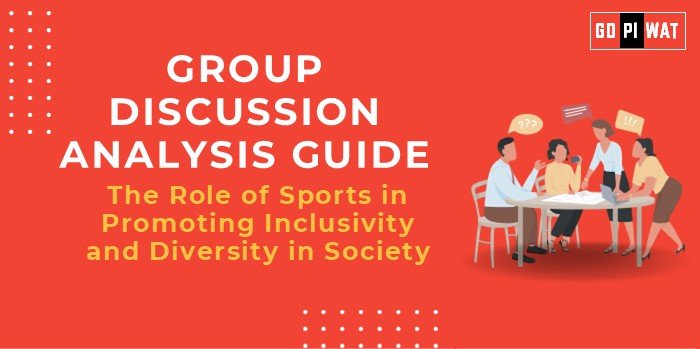📋 The Role of Sports in Promoting Inclusivity and Diversity in Society
🌐 Introduction to the Topic
Opening Context: “Sports, a universal language, has the unparalleled ability to break barriers and foster inclusivity, transcending societal divisions.”
Topic Background: Historically, sports have served as a platform for promoting equity. From Jackie Robinson breaking racial barriers in baseball to global initiatives like the Paralympics, sports continually highlight their potential to unite diverse groups. Recently, initiatives like FIFA’s “Football for All” and the IOC’s commitment to gender equity underline the evolving focus on inclusivity.
📊 Quick Facts and Key Statistics
- 🌍 Global Participation in Paralympics (2024): 4,500+ athletes from 170 nations – showcases global inclusivity efforts.
- 🚺 Women in Sports (2023): Women represent 40% of global sports participants – highlighting progress in gender equality.
- 🌈 LGBTQ+ Representation: The 2021 Tokyo Olympics featured 180+ openly LGBTQ+ athletes, a record for visibility in sports.
- 📈 Economic Contribution: Sports industry contributes $500 billion annually to the global economy – emphasizing its societal impact.
🏗️ Stakeholders and Their Roles
- 🏛️ Governments: Establish policies and funding for inclusive sports programs (e.g., Title IX in the USA).
- 🤝 NGOs and Non-profits: Promote grassroots initiatives for underrepresented communities.
- ⚽ Sports Organizations: Enforce policies that ensure inclusivity in events (e.g., gender quotas).
- 📰 Media: Amplify stories of diverse athletes and challenge stereotypes.
- 👨👩👧👦 Communities and Individuals: Foster inclusive local leagues and participation.
🏆 Achievements and Challenges
🎉 Achievements:
- 🚺 Increased Female Participation: Policies like Title IX have significantly boosted women’s involvement in sports.
- 🌟 Paralympics Awareness: Highlighting the achievements of differently-abled athletes has transformed public perceptions of disability.
- 🌈 LGBTQ+ Representation: Inclusion in global events has promoted broader societal acceptance.
⚠️ Challenges:
- 💰 Economic Disparity: Marginalized communities often face limited access to sports opportunities due to financial constraints.
- 🚪 Lack of Representation: Discrimination and underrepresentation persist at leadership levels in sports organizations.
- 🌍 Uneven Development: Inclusivity policies vary widely across regions, with cultural restrictions limiting progress in some areas.
🌍 Global Comparisons:
- 🇳🇿 New Zealand: Inclusivity initiatives in rugby, such as supporting LGBTQ+ players, serve as global benchmarks.
- 🇸🇦 Middle East: Cultural restrictions often limit women’s sports participation and leadership roles.
💡 Structured Arguments for Discussion
Supporting Stance: “Sports provide a powerful platform for social change, exemplified by movements like ‘Black Lives Matter’ in global sports.”
Opposing Stance: “Despite progress, tokenism and systemic barriers continue to hinder true inclusivity in sports.”
Balanced Perspective: “While sports have made significant strides in inclusivity, achieving true diversity requires addressing systemic and cultural challenges.”
🗣️ Effective Discussion Approaches
Opening Approaches:
- 📊 Statistical Opening: “Did you know that the 2021 Olympics had a record number of women athletes, showing sports as a driver of gender equality?”
- 🌟 Imaginative Opening: “Imagine a world where every child, regardless of ability, finds a place in sports—how far are we from that reality?”
Counter-Argument Handling:
- ✔️ Acknowledge Economic Barriers: Propose solutions like subsidized training programs to bridge the gap.
- 📈 Highlight Success Stories: The Paralympics illustrate how structured efforts can transform perceptions and opportunities.
⚙️ Strategic Analysis: SWOT Framework
- ✅ Strengths: Universal appeal and established frameworks for inclusivity (e.g., Paralympics).
- ❌ Weaknesses: Gender pay gaps, underrepresentation, and cultural resistance in some regions.
- 📈 Opportunities: Expansion into rural areas, leveraging technology for accessibility.
- ⚠️ Threats: Economic constraints and rising incidents of discrimination in sports.
🎓 Connecting with B-School Applications
Real-World Applications:
Developing strategies for inclusive team management and diversity leadership in organizations, inspired by lessons from sports.
Sample Interview Questions:
- 💬 “How can sports teach lessons for inclusivity in corporate culture?”
- 📊 “What are some effective ways to measure diversity in sports initiatives?”
Insights for Students:
- 📘 Explore sports’ role in social branding and CSR initiatives.
- 🌍 Use sports examples to draw parallels with organizational diversity challenges.


